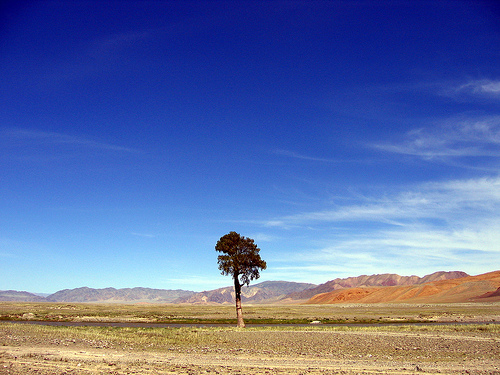
Landscape of Mongolia, Image by Tiarescott, and used under a Creative Commons license.
We all have our presumptions and stereotypes about Mongolia, a country which is rarely caught by the international media radar. There is little information about the Mongols except for the legendary Genghis Khan. What if there was a vibrant blogosphere bringing Mongolian perspectives to the world readers? One might argue that we often see stereotyped images of nomads, tents and animals in the desert representing Mongolia. Are those people really going to blog?
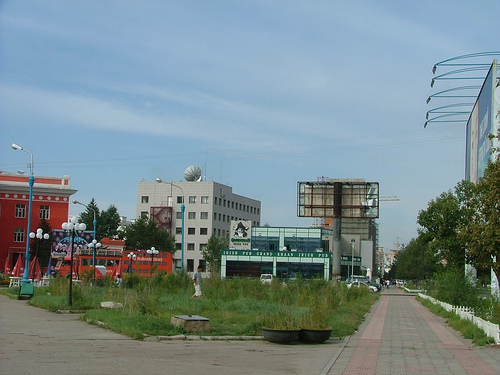
Irish Grand Pub…in Mongolia by Alan Cordova, used under a Creative Commons License. See More of Ulaanbaatar in Flickr.
The fact is that the country has undergone dramatic transformation both in political and economical terms since the early 1990s. Mongolia has joined the one laptop per child project and within 2010 every Mongolian child will be equipped with a laptop.
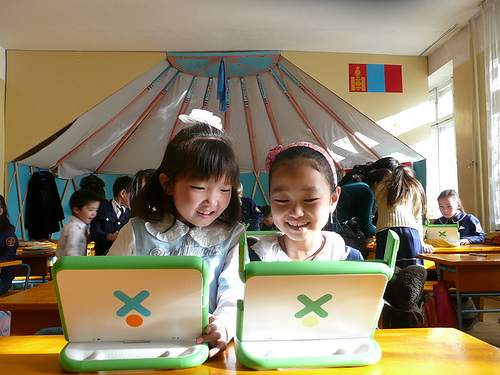
Mongolian children working with XO laptops. Image by One Laptop Per CHild, used under a Creative Commons license.
20,000 units of the XO laptops were provided in January 2008 to children from 6 to 12 years of age in the most inaccessible parts of the country, and also in Ulaanbaatar. (source)
According to the 2007 stats more than 10% of its approx 3 million population use internet. So it will be a matter of time when more and more Mongolians will be starting to use the citizen media tools like blogs. One of the latest Rising Voices grantees are on the job with their outreach efforts.
 Portnoy Zheng is from Taiwan and besides his remarkable works for Global Voices he works as a project manager in Mongolia and Tibetan Foundation in Taiwan. He is the man behind the Rising Voices grantee Nomad Green, which in collaboration with the Mongolian and Tibetan Foundation and the Mongolian Green Party, will train Mongolian citizens how to use citizen media. They idea is that they will write about their country using citizen media tools concentrating on the environmental crisis and create awareness. The target audience is first the Mongolians, second the Chinese, because they are their biggest neighbors and then of course the world readers.
Portnoy Zheng is from Taiwan and besides his remarkable works for Global Voices he works as a project manager in Mongolia and Tibetan Foundation in Taiwan. He is the man behind the Rising Voices grantee Nomad Green, which in collaboration with the Mongolian and Tibetan Foundation and the Mongolian Green Party, will train Mongolian citizens how to use citizen media. They idea is that they will write about their country using citizen media tools concentrating on the environmental crisis and create awareness. The target audience is first the Mongolians, second the Chinese, because they are their biggest neighbors and then of course the world readers.
Mongolian natural resources are not adequate and are further challenged by human exploitation and the effects of global warming. Hot summers, long and harsh winters, and low rainfall threatens desertification of new lands.
The deforestation rates have risen since the mid 1990s from around 40,000 ha annually to around 60,000 ha (World Bank).
Portnoy writes in the project blog:
Ulaanbaatar, the capital of Mongolia, is a city rounded by mountains. Because of the unpredictable climate changes in recent years, cattle that nomadic people depends on died a lot which drives many to go to the city and live in poverty.
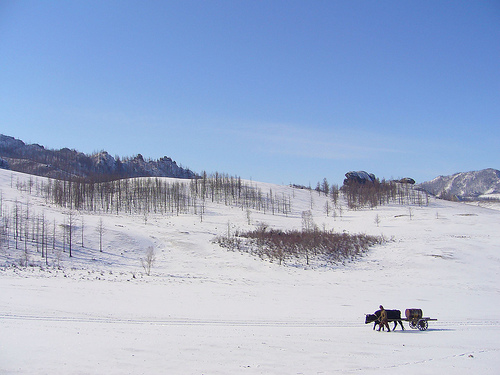
Gorkhi-Terelj National Park, Mongolia. Image by yeowatzup, used under a Creative Commons license.
The capital Ulaanbatar has its share of problems; air pollution and the lack of clean water supply. The air pollution is spread by the burning of soft coal, and airborne industrial pollution from the former Soviet Union and the People's Republic of China. The country has only 34.8 cubic kilometers of renewable water resources, 53% of which are used for farming. According to 2000 statistics only 77% of city dwellers and 30% of the people living in rural areas had access to pure water. (source)
We have discussed with Portnoy on the details of the project. Here is the interview:
RV: What prompted you to engage in an outreach activity in Mongolia?
Portnoy: Besides Global Voices, I am engaged in several NGOs and social movements in Taiwan and make a lot of friends. After I left my full-time job at the end of last year from a Web 2.0 startup, my friend, the Chief Secretary of Mongolian and Tibetan Foundation, Lin Cheng-hsiou (Axiou) invited me to join this project around citizen media, digital inclusion, environmental awareness, and cultural interaction. I had no doubt and decided to take part in since these are all my favorite issues..
RV: What are the relations between Taiwanese and Mongolians? Do they travel to each others’ country?
Portnoy: It would be a long story. It is said that Taiwan the island was first “discovered” and “incorporated” into China's territory in Yuan Dynasty, which was ruled by Mongolians. Mongolia became an independent country in 1911 (the last year of Qing Dynasty), however, the Republic of China which established in 1912 denied the fact and still encompassed much of mainland China and Outer Mongolia. In 1945 at the end of World War II the Republic of China added the island groups of Taiwan and the Penghu islands to its authority. These island groups, together with Kinmen and Matsu, became the full extent of the Republic of China's authority after 1949 when the Kuomintang (KMT) lost the Chinese Civil War. The KMT lost the war to the Chinese Communist Party which then founded the People's Republic of China (PRC) in mainland China (according to Wikipedia). Therefore, many (Inner and Outer) Mongolian families came to Taiwan with KMT in 1949.
Mongolia has long been recognized by the world including PRC China as an independent country, however, in ROC's (outdated) Constitution, Mongolia is still defined as a part of its territory. The part of Constitution is seen as a big joke now because it still remains there while ROC(Taiwan) is not recognized as a country by the world. People in Taiwan and Mongolia, however, are more realistic and has established tight connection on many aspects. There are more than 300 Mongolian students in Taiwan, and each year Mongolia would sent their police officers and procurators to Taiwan for training programs. Backpackers, volunteers, NGOs, and business people from Taiwan visit Mongolia very often.
I just attended the memorial ceremony of Genghis Khan on 4/16 with hundreds of Mongolian Taiwanese and Monglian citizens in Taipei.
You can see more pictures here .
RV: Do you have an idea of the Mongolian blogging scene?
Portnoy: My knowledge of Mongolian blogosphere is poor. I can't read Mongolian language though I plan to learn since this year. Most information of Mongolian blogosphere I know is from Global Voices. Fortunately, I've been given some very useful information about it by Ms. Otgoo, our Mongolian editor.
RV: Have you already recruited the Mongolian editors?
Portnoy: Yes, we have recruited a part-time Mongolian editor now, Ms. Otgonsuren(Otgoo). She was a teacher, a journalist, and now is a dedicated NGO member. She has published some posts on Nomad Green. She will talk about the journalism basics and environmental issues that Mongolian faces nowadays in the workshops.
RV: The contents will be in Mongolian and in Chinese. Who will translate them vice-versa?
Portnoy: We plan to invite Mongolian college students who major in Chinese in National University of Mongolia and Mongolian students who study in Taiwan to help us on translation. We have established connections with both communities, they are all excited about Nomad Green and willing to offer help.
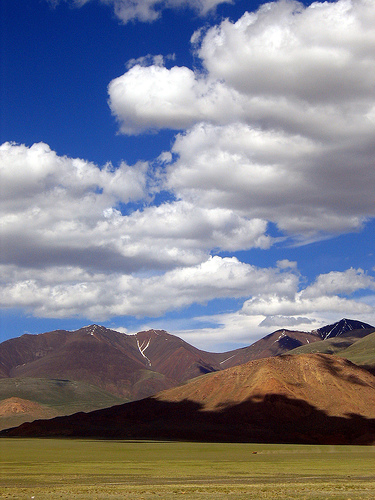
Landscape of Mongolia, Image by Tiarescott, and used under a Creative Commons license.
RV: Have you found your venue in Ulaanbaatar? What are the infrastructural challenges like the internet access and its cost?
Portnoy: We have decided to use the office of Journlaist Institute of Mongolia(JIM). Our partner Mr. Boum, the leader of Mongolian Greens in Ulannbaatar help us find this place. It can contain 15-20 workshop participants and has connected PCs. According to Boum, the connection speed is not very fast but acceptable. The cost is 15USD per hour. We really appreciate JIM for providing this great place for our workshops.
RV: Tell us about the planned workshops and curricula.
Portnoy: The first four workshop will be between May 4 to May 14 since Axiou and I are visiting Mongolia as well. Each workshop would be eight hours, including an hour and half of introduction to citizen media and the changing mediascape, another an hour and half on Mongolian environmental issues, two hours of new media training, and three hours of writing and practicing. We might alter the curricula based on the actual situation and participants’ response.
Please visit the Nomad Green Website and the project blog to learn more. Looking forward to reading lots of blogs from Mongolia discussing how to tackle the environmental problems.
Thumbnail image of Portnoy Zheng by zozo2k3, used under a Creative Commons license.

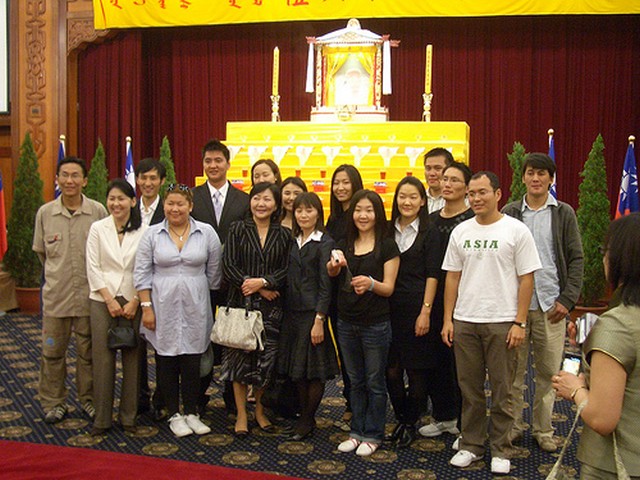


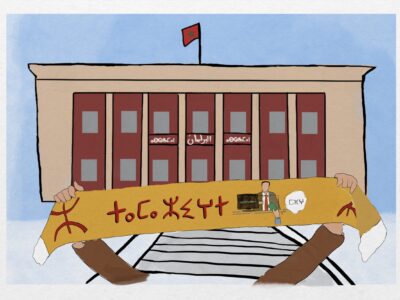
5 comments
Hello from Taiwan! Good luck to Axiou and Portnoy
Will there be some content translated to English? I hope so! :)
This is a much anticipated project! There are so many misconceptions or plain ignorance out there about Mongolia that your voices will be a welcomed introduction to your ways of life. Best of luck! :)
Thank you, Solana, Eddie and Romi. We look forward to initiate the first round of Workshops on 5/4 in Ulaanbaatar and will do our best to translate as much as we can into English and Chinese.